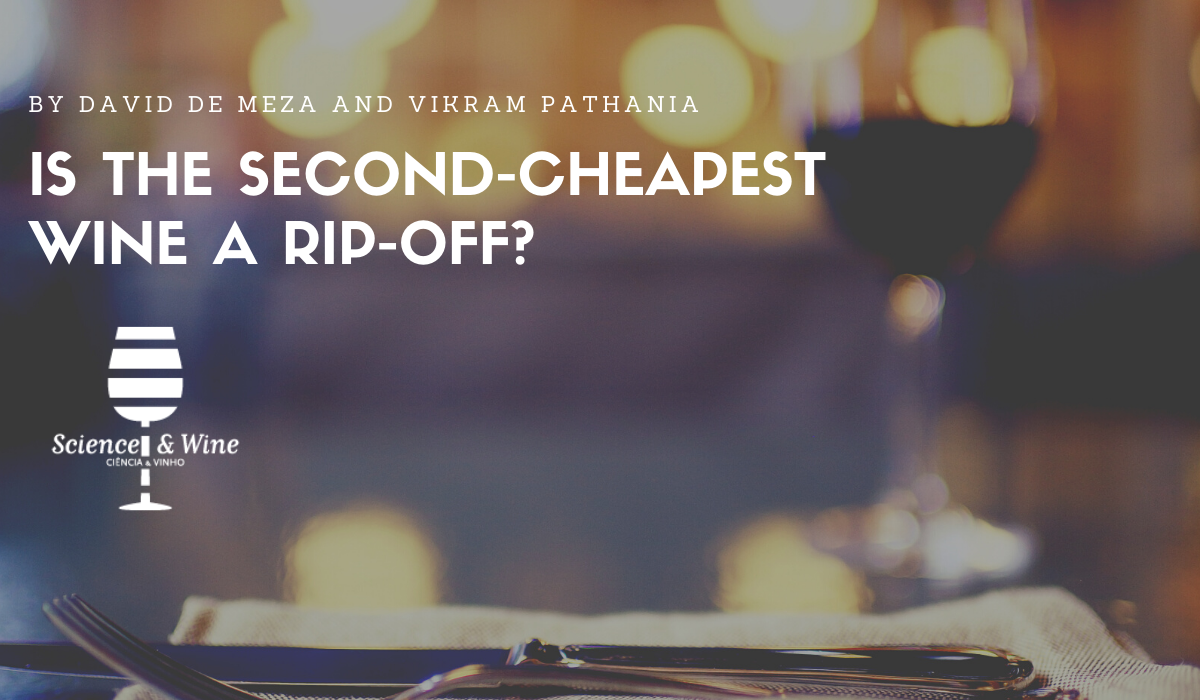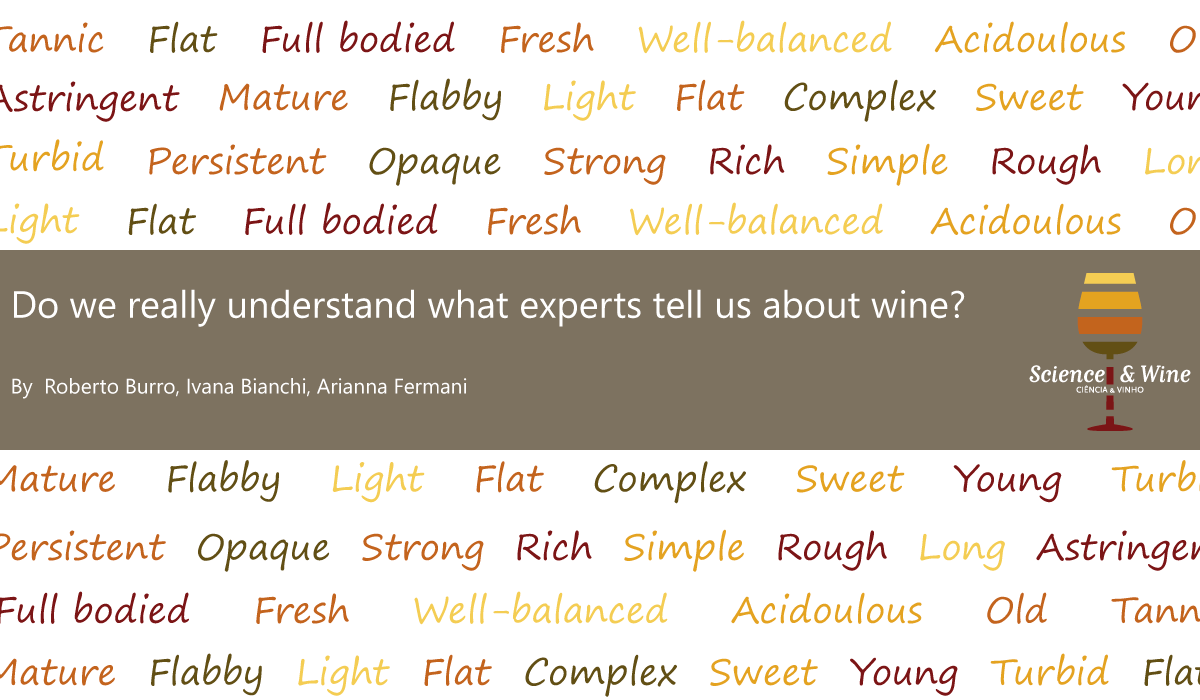The decision-making in the investment of a new line of stoppers based on agglomerated cork requires knowledge of the composition and its contribution to its performance. For this, it is necessary to observe the leading products on the market and to test a series of prototypes with different formulations. The development of manufacturing products made by cork, such as bottle stoppers, benefits strongly from accurate chemical and structural characterizations, correlated to the final material performance. A wise starting point to fulfill such requirement consist of comparing available products in the market to be compared with different prototypes with varying composition. This work presents a blind characterization of a series of cork samples through a non-supervised exploratory analysis designed to select agglomerated corks for spirits and still wines in the packaging industry.

Health warning labels on wine bottles and how they influence perceived risk of consumption
Wine is an essential part of European culture. Unfortunately, the consumption of alcohol, such as wine, can have negative health effects. Health warning labels (HWLs) are increasingly presented as a measure to warn consumers of the threat alcohol poses to their health. At present, only a few countries in Europe have introduced mandatory HWLs on wine bottles. This may be due to the cultural and economic significance of wine and the European public’s refusal to accept HWLs on a product like wine. To investigate this issue, the authors conducted an online experiment in the German-speaking part of Switzerland and assessed the perception of risk in participants who were presented wine bottles featuring different types of HWLs. They also studied how health beliefs and cultural worldviews influence the perception and acceptance of HWLs. The study revealed a small effect of HWLs on consumers’ risk perception. There was no difference between a simple text-only HWL and a label featuring a deterring picture (image-and-text HWL). The major determinants of HWL acceptability were cultural worldviews and health beliefs. That is, participants who opposed government intervention for collective wellbeing and espoused a belief in the health benefits of wine were less likely to accept HWLs on wine. More research is needed to assess the effectiveness of HWLs in real-life situations and the importance of culture to the acceptance of such a public intervention measure.

Analyzing the risks of illiquidity of fine wine
In this post authors summarize the result of a study in which they used a unique and very deep database to examine the performance of wine investments over the period 2003–2014. Their results reveal that the returns stemming from those investments are important but can largely be explained by their exposure to common risk factors. It appears essential to properly account for the lack of liquidity on the wine market and its exposure to global currency risk. Controlling for these wine market specificities and contradicting prior evidence, fine wines do not seem to offer abnormal returns.

Wine packaging and its impact on flavor
This is a post that summarizes a review of the most commonly available wine packaging categories. This includes glass bottles, polyethylene terephthalate bottles, bag-in-box, aluminum cans, and Tetra Pak. While glass is still the dominant packaging material within the wine industry and by consumer demand, economic and environmental concerns are driving the industry and consumers to investigate and adopt alternative packaging materials.

Is the second-cheapest wine a rip-off?
The second-cheapest bottle on a restaurant wine list is widely thought to be priced to exploit naïve diners embarrassed to choose the cheapest option. This post it is a summary of an investigation whether this behavioral theory holds empirically. The authors find that the mark-up on the second-cheapest wine is significantly below that on the four next most expensive wines. It is therefore an urban myth that the second-cheapest wine is an especially bad buy.

Historical Wines of Portugal: The Classification, Consumer Associations and Marketing Implications
Geographical origin, use of traditional varieties and ancestral viticulture/oenology practices characterize wines classified as Historical Wines of Portugal (HWP). This post reports a study that identifies the authenticity attributes consumers associate with this classification and assesses the relative strength of associations. Compared to Aspirational Explorers, wine connoisseurs emerged as Heritage Gatekeepers, associating origin, cultural heritage, quality, production and at-home consumption more strongly with HWP, and tradition, wine age and out-of-home consumption less strongly. Market recognition of HWP as a novel and distinctive table wine classification, with well-defined and unique attributes, is thus likely to depend on consumers’ general wine knowledge. Related promotional activities targeting wine novices should first focus on educating them on HWP classification, whereas those directed at savvier consumers should emphasize wine authenticity cues instead.

Do we really understand what experts tell us about wine?
Expert wine tasters have a greater ability than non-experts to discriminate between and evaluate the sensory properties of wine. In this study the authors explore non-experts’ understanding of a set of 64 terms which are frequently used as descriptors of the sensory properties of wine. The results reinforce the idea that when people describe wine or convey information, there is a serious risk of misunderstandings occurring when experts communicate with standard consumers. This indicates a necessity for wine industries to invest in research aimed at ensuring that experts (e.g. sommeliers, oenologists or producers) refer to the same basic sensory dimensions relating to wine as standard consumers. The present paper aimed to raise the question of whether the dimension referred to by experts (in the present case relating to a wine’s body or its acidity, for instance) matches the dimension that non-experts think of. This study has shown that modelling these dimensions in terms of opposite poles (which is typical of some tasting scales used by experts) also works quite well for standard consumers.

The Wine Influencers: Exploring a New Communication Model of Open Innovation on Social Networks
Wine Influencers (WIs) represent a new type of independent third-party endorsers that are progressively establishing themselves within social networks. This study analyzes the characteristics of the activity of WIs and the communication model used via Instagram. Netnographic Analysis, Factor Analysis and AGIL methods were applied. The results show five Key-findings within specific relationships established during discussions: advice from Wine Influencers and generalized reciprocity in relationships; structural and social bonds established based on the frequency of messages from regular followers; peer-to-peer relationship development through recommendation; development of trust established through online relationships; wine influencer’s influence on followers regarding everything about the wine. The study derives a model that explains the communication dimensions used by WIs that are: advertising (information about product/brand) (35.71%); persuasion—added value to brand and product (42.62%); brand democratization (10.07%); and identity (8.03%). This study provides a novel contribution to the open innovation process of small and medium-sized wine industries for their marketing strategies.

Facing Giants: The Wine Industry in Canada
The Canadian wine industry is a small but growing sector of the economy rooted in non-metropolitan areas. Dependent upon local natural resources and climatic conditions and coupled with changes in consumers’ preferences, wineries are pressured to adopt and develop more ecological practices and production processes. This post is based on a study that explores the main drivers of eco-innovation and analyzes differences between the factors associated with eco-innovation and conventional innovation.


